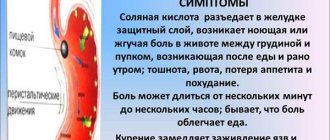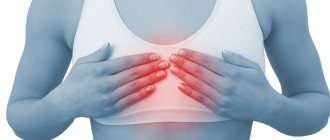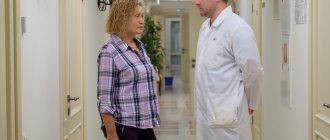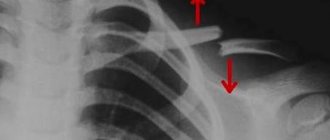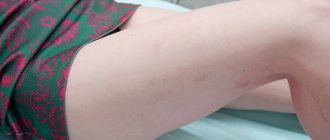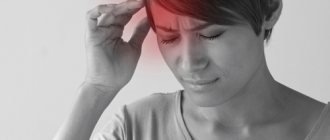1.Pain in legs
Almost all people at some point in time experience problems with their legs - pain in the legs, pain in the feet, toes, ankles and other unpleasant sensations.
Why is this happening? In fact, there can be many reasons. Most of the time, our body movements do not cause any problems. But due to daily or too intense stress, a variety of leg diseases can develop. In addition, injuries and the natural aging process can cause discomfort and pain in the legs.
Your toes, feet, and ankles may experience burning, pain, fatigue, numbness, tingling, warmth, or coldness
.
muscle spasms
occur in the legs, especially at night when you sleep, and swelling of the legs.
The feet and ankles may become discolored, pale, or blue
.
There may be an unpleasant odor from your feet
.
Some of these symptoms are normal for older people or pregnant women. In this case, treatment at home is usually sufficient. In other situations, you need to find the cause of the problem and treat it.
Bemer therapy is a modern way to combat all types of pain. You can read more about Swiss physiotherapy in this section
Sign up for a consultation
A must read! Help with treatment and hospitalization!
Flat feet
According to RNIMU (Russian National Research Medical Institute) named after. Pirogov, from 40 to 60% of the Russian population are susceptible to flat feet . Of these , there are 4 times more women than men .
According to medical statistics from ROSZDRAVA: - by the age of two, 24% of children show the first signs of flat feet, - by the age of four - in 32%, - by the age of six - in 40%, - by the age of twelve - 50% (every second teenager is diagnosed with flat feet ), - by the age of twenty - 60% .
Flat feet can be either congenital or acquired.
Congenital flatfoot in its “pure” form is rarely observed - in approximately 5% of cases . Acquired flatfoot is more common .
Of all cases of acquired flatfoot, transverse flatfoot is in first place in frequency ; it is diagnosed in approximately 65% of cases. In second place in the frequency of detection (about 33% of cases) is longitudinal flatfoot with concomitant flatness of the forefoot. Longitudinal flatfoot is usually combined with hallux valgus . The frequency of this pathology is about 11% of all foot diseases.
2.Causes of leg pain
There are several categories of problems that can cause leg pain, discomfort and the other symptoms listed above. Let's try to figure it out in more detail.
Firstly, it may be problems with the skin of the legs
. Symptoms and the diseases that cause them may be:
- If while walking you feel as if you are walking on stones or pebbles, it may be plantar warts on the lower part of your foot;
- Areas of dense and hard skin on the heels may appear due to calluses, blisters on the skin or engorgement of the skin due to uncomfortable shoes, walking barefoot;
- Redness, peeling of the skin, burning and itching between the toes or on the bottom of the leg are signs of foot fungus (mycosis). Another possible cause is dermatitis due to the shoes you wear;
- Red, swollen, and tender skin around the nail may be symptoms of an ingrown toenail or nail infection (paronychia);
- Redness, swelling of the feet, pain in the feet when walking or touching are signs of a possible bacterial infection. You can become infected in public showers, swimming pools and other similar institutions.
The toe joints are a very vulnerable area.
. And it is with the joints of the toes that there are more problems than with any other joints in the body.
- Big toe joint pain, redness, swelling and tenderness that suddenly appears in the big toe joint can be caused by gout. The same symptoms can appear due to infection;
- If you have a swelling or lump at the base of your big toe, it may be a bunion;
- A lump on the outside of the little finger may be due to bunion;
- Toe joint pain, stiffness, and swelling are common symptoms of bunions, arthritis, lupus, or gout.
Foot pain may appear in the front of the foot or in the heel.
- Sharp pain in the bottom of the heel can be caused by plantar fasciitis;
- Pain in the back of the heel or ankle are symptoms of Achilles tendinitis, or as it is also called, Achilles tendinitis;
- Pain that worsens before or after exercise but improves during exercise may be caused by a broken bone in the leg (usually a metatarsal);
- Small bone spurs under the heel bone that cause heel pain may be a heel spur;
- Pain in the midfoot occurs due to flat feet;
- Pain in the back of the heel or a lump in this area is a symptom of a type of bunion.
Many diseases can affect the nerves of the foot
, causing foot pain, numbness, tingling and burning.
- Foot pain, burning, tingling, or numbness between the toes, especially between the third and fourth toes, and the same sensation in the forefoot may occur due to swelling or thickening of the nerve in the forefoot;
- Pain, numbness, or tingling that starts in the back or buttocks and moves down the leg may be caused by sciatica due to a pinched nerve;
- Weakness and pain in the ankle, which is often accompanied by numbness, can begin due to a pinched nerve in the ankle (tarsal tunnel syndrome) or sciatica;
- Burning in the legs, numbness and loss of sensation appear due to poor blood circulation. This problem is more common among people with diabetes or peripheral artery disease.
As you can see, the causes of leg pain, pain in the feet, ankles, toes, and other causes of discomfort in the legs can be very different. Therefore, if you experience symptoms such as pain in the legs, swelling of the legs, cramps in the legs, burning sensation, numbness, tingling in the legs and toes, paleness or blueness of the legs, you need to consult a good doctor. A specialist will help determine the cause of discomfort in the legs and tell you how to deal with them.
Visit our Therapy page
Neurogenic myalgia
Neuromuscular diseases, when muscle function is disrupted, i.e. damage to the muscles themselves or due to dysfunction of the neuromuscular junction, diseases of the spinal cord, damage to peripheral nerves or damage to the motor nuclei of the brain stem.
With osteochondrosis of the thoracic and lumbar spine, there may be plexopathies, radiculopathy, plexoradiculopathy. You are concerned about pain, limited movement, impaired sensitivity, muscle atrophy, paresis and paralysis may develop.
Progressive muscular dystrophies are genetic hereditary diseases and most often occur in childhood.
Inflammatory myopathies or myositis can occur due to inflammation or due to autoimmune diseases.
Mitochondrial myopathies are hereditary diseases, the cause of which is disruption of the functioning of mitochondria - the “power stations” of cells in which most of the ATP necessary for the cell is synthesized. This is a huge spectrum of diseases.
There are several different mitochondrial diseases with primary involvement of striated muscle or combined involvement of muscle tissue and the brain:
- — Kearns-Sayre syndrome is characterized by ophthalmoplegia, ataxia, muscle weakness, cardiac conduction disturbances, etc.;
- - MELAS syndrome - encephalomyopathy, lactic acidosis, stroke-like episodes;
Leber's optic neuropathy - acute loss of central vision in young men and many others.
Conditions associated with disruption of cellular energy are very common and are not limited to hereditary syndromes. Among them: chronic fatigue syndrome, migraines, cardiomyopathies, glycogenosis, connective tissue diseases, diabetes, rickets, hypoparathyroidism and many others.
The diagnosis of mitochondrial myopathies is based on morphological diagnosis and identification of the RRF phenomenon (“regged” red fibers, “torn” or “rough” red fibers).
3. Treatment of pain in the legs (ankles, feet, toes)
Treating leg pain at home often helps to cope not only with pain, but also with other symptoms - swelling of the legs, cramps, and discomfort. Treatment, as a rule, begins with eliminating the factors that caused pain in the legs.
and other unpleasant sensations.
For example, you should stop exercising at least temporarily if you experience pain in your legs (feet, ankles, or toes) during exercise. Physical activity “through pain” is contraindicated. It is important to wear high-quality and comfortable shoes. Arch supports and other orthopedic devices
will help make walking more comfortable.
Cold application, rest, foot massage, gentle and gentle exercises
(for example, for stretching tendons) will help cope with leg pain, leg swelling or cramps. To relieve leg pain, you can take over-the-counter pain medications.
For swelling of the legs, swelling of the feet and ankles
You can raise your swollen legs just above the level of your heart and sit like that for a while. If you have a sedentary job, get up and walk around for a few minutes every hour. Reduce your salt intake.
If your home treatments for leg pain (feet, ankles, toes), leg swelling, and other problems do not have the desired effect, consult your doctor. Consultation with a specialist is required
and when the pain and swelling intensify, signs of infection appear, the skin turns pale, tingling and numbness appear.
About our clinic Chistye Prudy metro station Medintercom page!
Bunion
This is an inflammatory process near the joint capsule on the big toe (bursa). According to statistics, most women who wear uncomfortable shoes . The statistics are such that every 7th inhabitant of planet Earth faces inflammation of the foot joint every day. As a rule, these are elderly people, athletes and ballerinas. Women are more susceptible to inflammation of the foot joints.
Under pressure, deformation of the phalanx of the finger occurs; with constant wearing of uncomfortable shoes, the joint takes on the shape in which it is most often found. This deformation disrupts blood circulation and injures soft tissues. The same thing happens with injuries or bruises.
4.Bemer therapy
In our medical practice, Bemer therapy has proven to be the most successful way to combat any type of pain. BEMER therapy is electromagnetic physiotherapy from Switzerland, the main goal of which is to improve blood circulation.
The Bemer device consists of three elements: an induction mattress aimed at general health improvement, a reinforced applicator - a device that allows you to influence a specific place, and a laser magnet, which has the strongest effect on the pain point
read more about Bemer therapy by following the link. If you want to get a consultation or make an appointment, you can do this using the feedback form or by phone: +7-495-212-08-85
Sign up for a consultation
Fungal diseases
According to medical statistics and epidemiological studies, in Russia the presence of fungal nail disease can be expected in almost every fifth adult. Moreover, the incidence rate has increased 2.5 times over the past 10 years. Infection in 30% of cases occurs in the family, from a relative with foot or nail fungus. Most often, the infection is transmitted through shared shoes, but sometimes through other household items. Infection occurs with equal frequency in public places: baths, showers, gyms and sports halls, swimming pools. As a rule, the skin of the feet is affected first, and then the nails.
Bone damage
Damages to the bone tissue of the lower extremities (tumors, subperiosteal hematomas, fractures) may be accompanied by pain, tenderness to the touch, and swelling of the limb. Clinical manifestations may be similar to venous thrombosis. It can be especially difficult to diagnose a hip fracture in older people (the fracture is often accompanied by swelling of the lower limb). Considering the involutional changes in the central nervous system (cerebral vascular sclerosis), it is sometimes difficult to collect an anamnesis in this category of patients. In addition, elderly people often have a combination of a femoral neck fracture with venous thrombosis.
Acute venous blockage
Blockage of the venous system is called thrombosis. A pathology such as thrombosis often leads to local disturbances in blood flow, and in advanced forms, to global systemic changes in blood circulation. The deep veins of the legs are at greatest risk - it is in them that blood clots most often form.
Thrombosis (thrombophlebitis) develops against the background of acute or chronic venous insufficiency.
Experts identify the following reasons for the development of this pathology:
— Long standing work
— Genetic predisposition
— Physical inactivity
- Excess weight
— Heavy physical activity, heavy lifting, prolonged work in a standing or sitting position
The appearance of a pathology such as thrombosis is fraught not only with the possibility of trophic damage and blockage, but also with a risk to life - the occurrence of pulmonary embolism. This is due to the possibility of a detached blood clot penetrating into the lung through the bloodstream, which can cause instant death.
Osgood-Schlatter disease
Osgood-Schlatter disease (sometimes also called Schlatter disease or osteochondrosis of the tibial tuberosity) is an inflammation in the upper part of the tibia, where the patellar tendons attach to the tubercle called the tibial tuberosity. This disease is often the cause of knee pain in adolescence (from 10 to 15 years), is associated with the growth of the musculoskeletal system, and as growth completes, the symptoms may disappear.
Osgood-Schlatter disease can cause pain, swelling, and tenderness in the area of the front of the knee, below the kneecap. As a rule, one knee is affected (sometimes it happens on both sides). Symptoms worsen when the tendon attached to the tibial tuberosity is stressed (for example, when jumping). The diagnosis is made on the basis of radiography. The main goal of treatment is aimed at preventing symptoms (reducing certain types of stress, immobilization during exacerbation, physiotherapy). Surgical treatment methods are rarely used.
Diagnostics
First of all, to diagnose the cause of pain, the doctor needs to get answers to a number of questions:
- Localization of pain
- Presence of pain in one or two limbs
- Nature of pain (sharp, dull)
- Dependence of pain on time of day
- Dependence of pain intensity on physical activity
- Possibility of reducing pain when raising legs
- The presence of other symptoms (fever, weakness, lower back pain).
In addition, the doctor will conduct a physical examination (visual examination, palpation, various tests). Instrumental examination methods:
- Laboratory research
- Ultrasound of the vessels of the lower extremities (Dopplerography of veins and arteries)
- Arteriogram
- Scintigraphy
- MRI
- CT
- Radiography
Rupture of popliteal cyst (Baker's cyst)
The fluid contained in a Baker's cyst, when ruptured (in the case of injury, arthritis or surgery in the knee joint), can flow down into the intermuscular space and cause an inflammatory reaction. This may manifest itself as pain, swelling in the lower leg, tenderness on palpation and resemble the picture of venous thrombosis. Rupture of a Baker's cyst can occur without provoking reasons. The diagnosis can be made based on radiography. But the possible combination of cyst rupture and venous thrombosis requires first of all the exclusion of thrombosis.
Why is it dangerous?
— Decreased quality of life
– A chronic infectious disease that steadily destroys nails and threatens to spread to surrounding people, especially family members of the patient.
- Untreated mycosis of the nails and mycosis of the feet are considered as an entry point for other infectious diseases - for example, bacterial - erysipelas.
— Complicates the course of diabetes mellitus and can lead to serious complications.
— Allergization of the human body with a fungal infection is the formation of hypersensitivity to the fungus as an allergen, that is, fungal allergy.
— Development or worsening of diseases such as bronchial asthma, allergic dermatitis, various skin rashes and reactions.
- In rare cases, against the background of immunodeficiency, untreated nail fungus led to the development of deep mycosis - germination or penetration of the fungus with blood into the internal organs, which caused death.
Pathomorphology
The main changes develop in the intima of the arteries. There are 5 morphological stages of atherosclerosis:
- Prelipidic – characterized by increased endothelial permeability, destruction of the basement membrane, destruction of elastic and collagen fibers.
- Stage of lipoidosis - focal infiltration of the arterial intima with lipids occurs.
- Stage of liposclerosis - a fibrous plaque forms in the intima of the artery.
- Stage of atheromatosis - destruction of the plaque occurs with the formation of an ulcer.
- Stage of atherocalcinosis – plaque calcification occurs.
Based on the type of damage to the vascular bed, segmental and diffuse atherosclerosis are distinguished. In the first case, the process develops in a limited area of the vessel from single plaques to complete occlusion of the lumen. This type is more favorable in terms of the potential for performing bypass reconstructive operations on blood vessels. The diffuse type involves widespread atherosclerotic lesions predominantly in the distal bed, leaving no “window” for the surgeon to apply a shunt or prosthesis. The destiny of such patients is conservative therapy in order to delay the onset of gangrene as much as possible.
Acute obstruction of the arteries of the extremities
The consequences of acute arterial obstruction are severe. According to domestic and foreign authors, the development of acute occlusion of the aorta and main arteries of the extremities leads to the death of 20-30% of patients, in 15-25% of cases treatment ends with amputation of the extremities. In some reports, the mortality rate reaches 41% and even 64.5%.
Despite the successful development of vascular surgery in recent decades, the sad statistics on acute arterial obstruction do not have a significant tendency to improve. The main causes of acute arterial obstruction are embolism 57% and acute thrombosis 43%. The incidence of acute arterial obstruction tends to increase
Acute arterial obstruction (AAO) is a collective concept that includes embolism, thrombosis and arterial spasm:
Embolism is the separation of a blood clot from the site of its initial formation, its transfer through the vascular bed with the blood flow and subsequent blockage of the artery.
Acute thrombosis is a sudden cessation of arterial blood flow caused by the development of a blood clot at the site of a vascular wall changed as a result of disease or injury.
Spasm is a functional condition that develops in arteries of muscular and mixed type in response to external or internal provoking moments (direct or indirect injury, fractures, etc.)
The main treatment for the disease is emergency surgery.
Treatment of obliterating atherosclerosis and superficial aneurysms of peripheral vessels
Treatment of OZANK is carried out depending on the nature and severity of the manifestations of the disease. If there is a slight disturbance in the structure of blood vessels, the patient is prescribed conservative therapy and dynamic observation.
All patients are recommended to eliminate the factors that provoke the progression of the pathology:
- to give up smoking;
- weight normalization;
- treatment of arterial hypertension and control of blood pressure;
- sufficient physical activity: walking, walks, physical therapy;
- changing your diet to reduce bad cholesterol and triglycerides;
- blood sugar control;
- the use of pneumatic cuffs and stockings to eliminate stress on blood vessels.
Drug treatment is aimed at reducing thrombus formation, normalizing blood flow and treating pathologies that increase the risk of stroke and myocardial infarction. For this purpose, the patient is prescribed antiplatelet agents (Aspirin, Cardiomagnyl, etc.), Pentoxifylline, ACE inhibitors, blood thinners (for example, Clopidogrel, Cilostazol, etc.).
If it is impossible to restore normal blood flow, patients with stage II-III OZANK can undergo the following types of surgical operations:
- thromboendarterectomy - performed to eliminate short localized lesions of the aorta, common or deep femoral, iliac arteries;
- artery bypass - an additional vessel (shunt) is created to bypass the blocked artery to normalize blood supply;
- artery replacement – the affected area of the artery is replaced with an artificial vascular prosthesis;
- endovascular operations (balloon angioplasty and artery stenting) - the lumen of the artery is expanded using a special balloon, which is inserted into the lumen of the artery and inflated; if necessary, a cylindrical wire structure (stent) can be installed at the site of narrowing, restoring normal blood flow.
The choice of surgical treatment method is determined by the clinical manifestations of the pathology. Endovascular interventions are less invasive and therefore doctors try to give preference to their implementation.
If surgical techniques turn out to be ineffective and the patient still develops gangrene, then to save his life, operations to amputate the limb (full or partial) are performed.
Also, for the treatment of patients with chronic ischemia of the lower extremities, angiogenesis stimulators (from autologous CD133+ endothelial progenitor cells) and Angiostimulin (a gene preparation of the vascular endothelial growth factor VEGF165) can be used.
Surgical removal of peripheral aneurysms of the vessels of the legs is indicated when the artery is dilated more than 2 times, and for protrusions in the arteries of the arms, operations are performed in all cases. To eliminate them, the affected area of the arterial vessel is excised and replaced with a graft. Sometimes an endovascular stent graft is used to repair aneurysms - a woven polyester tube covered with a metal frame is installed into the aneurysm without open surgery. This technique is used for patients who cannot undergo other types of surgery. Its purpose is to strengthen the vessel wall and prevent its rupture.
Medicines
Some medications can cause leg problems due to side effects. Combination with smoking or drinking alcohol increases the risk of drug side effects. The main groups of drugs that can cause leg problems:
- Drugs that cause blood clots (for example, contraceptives)
- Neuroleptics (aminazine, haloperidol)
- Beta-2 receptor agonists (terbutaline or albuterol)
- Antihypertensive drugs (nifedipine, amlodipine or nicardipine)
- Statins are drugs that lower blood cholesterol levels (simvastatin or atorvastatin).
- Estrogens
- Lithium preparations
- Diuretics (Lasix and others)
- Opiates
- Steroids
If you are taking medications (especially long-term), you should inform your doctor about the occurrence of pain or cramps in the legs.
